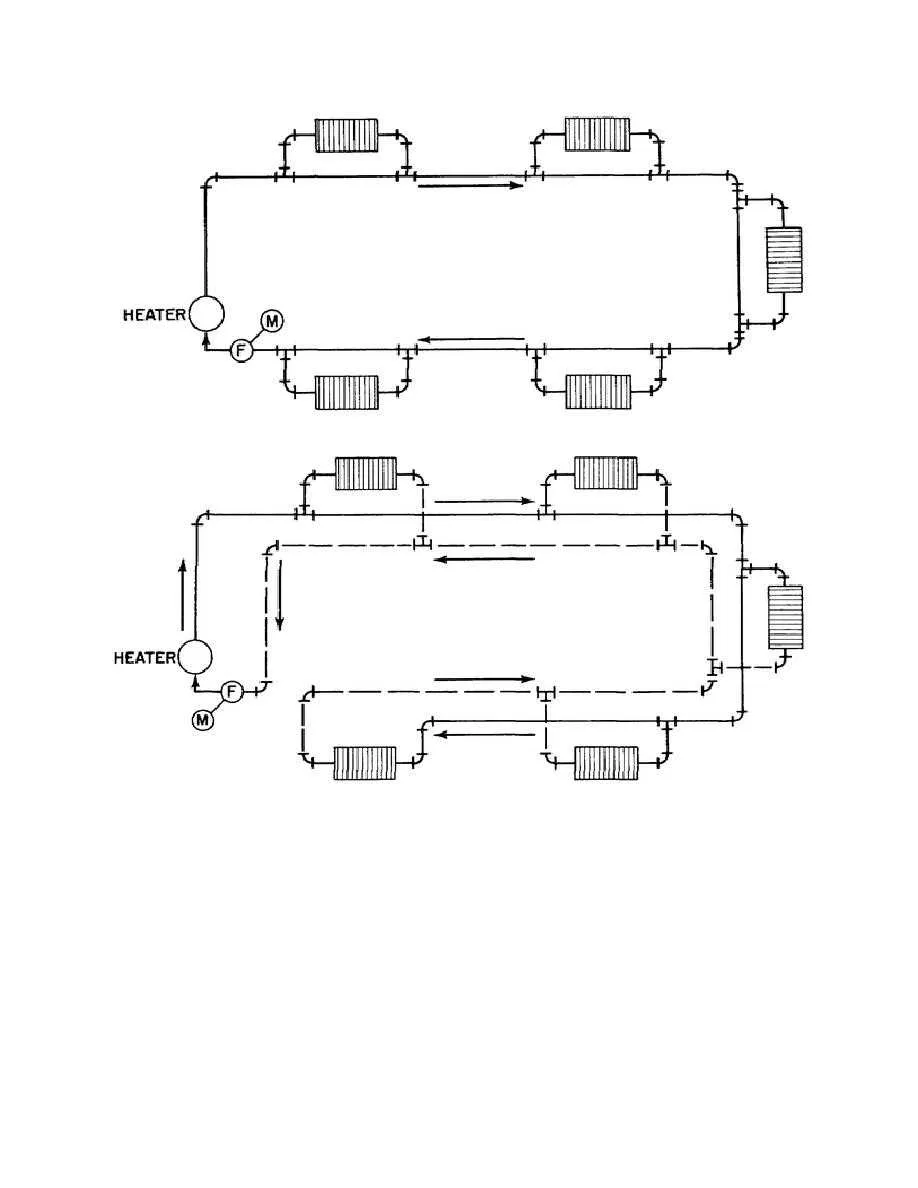
For optimal performance, plan the layout of your residential system carefully, considering factors such as pipe diameter, material, and flow rates. Ensure that all connections are strategically positioned to minimize friction losses and prevent potential blockages. Use reliable materials, such as copper or cross-linked polyethylene, to guarantee durability and prevent leaks over time.
Start by defining the most efficient route for fluid circulation. This should prioritize direct paths, minimizing unnecessary bends or loops that can lead to higher energy consumption. In a typical setup, a primary distribution line runs from the heat source to key access points, with branches leading to fixtures. Make sure to account for pipe insulation in colder areas to reduce heat loss.
When planning pipe sizes, keep in mind that larger diameters can handle more fluid, but they are also costlier and harder to install. For most homes, a 15-20 mm diameter pipe works well for average domestic usage, but adjustments should be made based on demand and fixture placement. Regular maintenance checks are crucial to avoid blockages and ensure the longevity of the system.
Consider the incorporation of expansion valves and air separators to maintain steady pressure and reduce the risk of system failure. Additionally, integrate check valves to prevent backflow and ensure that the flow remains one-directional, which is essential for maintaining efficient operations.
Efficient Layouts for Plumbing Systems

For optimal distribution, ensure that the system is designed with short, direct routes from the source to fixtures. Minimize bends and turns in the pipes to reduce pressure loss and enhance flow efficiency. Consider using a trunk-and-branch approach for simplicity in residential designs.
Pipe sizing plays a critical role in system performance. Oversized pipes may lead to excessive energy consumption, while undersized ones create bottlenecks, reducing overall efficiency. Select the right diameter based on fixture demand and system length.
When planning for multiple fixtures, incorporate parallel lines to allow independent flow control. This ensures that a single fixture does not affect the pressure or flow at others. Install balancing valves to maintain even distribution across all branches.
Isolate the supply using shutoff valves at strategic points to enable easy maintenance and prevent widespread disruptions in case of leaks or repairs.
For multi-story buildings, ensure that the riser pipes are adequately sized to avoid flow restrictions on higher floors. Install pressure-reducing valves if necessary to maintain consistent performance throughout the building.
Minimize the distance between the source and the farthest fixture to prevent excessive energy loss and reduce waiting time for the desired temperature.
Choosing the Right Pipe Materials for Hot Water Systems
For systems that handle high temperatures, selecting the right material for the network is crucial. Copper is a top choice due to its excellent heat resistance and durability, though it can be expensive. PEX is a more budget-friendly alternative, offering flexibility and ease of installation, while also performing well under high thermal conditions. It’s important to ensure the PEX tubing is rated for high temperature use, as not all types are suitable for prolonged exposure to heat.
CPVC, though a more affordable option, is not as robust as copper and may degrade over time when subjected to continuous high temperatures. Steel pipes, while durable and heat-resistant, tend to be heavy and prone to rust, making them less ideal for long-term performance. Cross-linked polyethylene (PEX-AL-PEX) offers enhanced strength and resistance to thermal expansion, making it a reliable option for systems under high stress.
When considering long-term costs, the labor required for installation also factors in. Copper may require soldering, which adds to labor costs, while PEX can be connected with simple fittings, lowering installation time and expenses. In contrast, steel piping often demands welding and specialized tools, increasing both the upfront cost and maintenance needs over time.
Consider the local climate and water quality as well. In areas with hard water, a corrosion-resistant material like PEX or CPVC may provide better longevity. Copper may develop scale buildup over time in such conditions, leading to reduced efficiency and eventual replacement. Be sure to select a material that suits the specific demands of the environment and ensures optimal system performance over its lifespan.
How to Interpret Heating System Schematics for Installation
To efficiently install a domestic heating system, start by understanding the layout shown in the schematics. Here are the key elements to focus on:
- Symbols and Icons: Each component, such as pumps, valves, and connections, is represented by a specific symbol. Familiarize yourself with the standard representations to avoid mistakes.
- Flow Direction: Always follow the arrows indicating the direction of fluid movement. Incorrect installation based on flow can lead to system malfunctions.
- Connection Types: Pay close attention to the type of connectors used (e.g., threaded, flanged, welded). This ensures compatibility with the actual components during installation.
- Pressure Relief Points: Look for any markings indicating pressure release valves or expansion tanks. These are crucial for maintaining system integrity under varying pressure conditions.
- Pipe Sizing: Take note of the specified pipe diameters and material types. Matching the correct size ensures optimal fluid movement and prevents bottlenecks or system failures.
- Temperature Control: Identify locations for thermostats, sensors, or mixing valves. These elements control the thermal regulation throughout the system.
- Shut-off Valves: Ensure shut-off points are strategically placed for easy access during maintenance or emergencies. These are typically located near major system components.
- Isolation Sections: Look for isolated zones in the layout. These allow for sectioning off parts of the system for repair without affecting the entire installation.
Before proceeding with the setup, double-check the routing and alignment of all elements as shown in the schematic. Any deviation from the plan can lead to inefficiencies or failure. When in doubt, refer to the product manuals for additional guidance on component installation.
Common Errors in Plumbing Layouts and How to Avoid Them
Incorrect pipe sizing is one of the most common mistakes in layout design. To prevent this, always use the proper pipe diameter based on flow rates and pressure requirements. Undersized pipes can lead to reduced flow and increased friction loss, while oversized pipes can result in higher material costs and unnecessary space usage.
Another frequent issue is improper pipe slope. A slope that’s too steep or too shallow can affect the efficiency of the system. Ensure that pipes are installed at the recommended gradient for optimal flow and drainage. A slope of 1/4 inch per foot is often ideal for most installations.
Incorrect valve placement can hinder proper control and maintenance. Always position shut-off valves in easily accessible locations, especially near critical branches or appliances, for future repairs or adjustments. Avoid placing valves in confined spaces or behind fixtures where they’re hard to reach.
Inadequate support for pipe runs can lead to sagging and potential leaks over time. Properly space supports and brackets to prevent stress on the pipes. For longer runs, consider adding extra support points to distribute the weight evenly and minimize strain.
Failure to account for thermal expansion is another common error. In systems where temperature fluctuations occur, pipes should be equipped with expansion loops or compensators to handle the resulting movement. Without these measures, pipes can crack or develop leaks under pressure.
Improper connection types, such as using threaded joints in high-stress areas, can lead to leaks or failures. Opt for welded or push-fit connections where possible, especially in high-pressure systems, to ensure long-term reliability and leak prevention.
Ignoring local codes or regulations is a mistake that can lead to costly rework or fines. Always familiarize yourself with the building codes in your area, ensuring that all materials, installation practices, and system designs meet legal standards.
Finally, poor planning of the layout, such as placing components too close to each other, can complicate future maintenance or repairs. Allow enough clearance for inspection and replacement of parts to reduce downtime and repair costs in the long run.